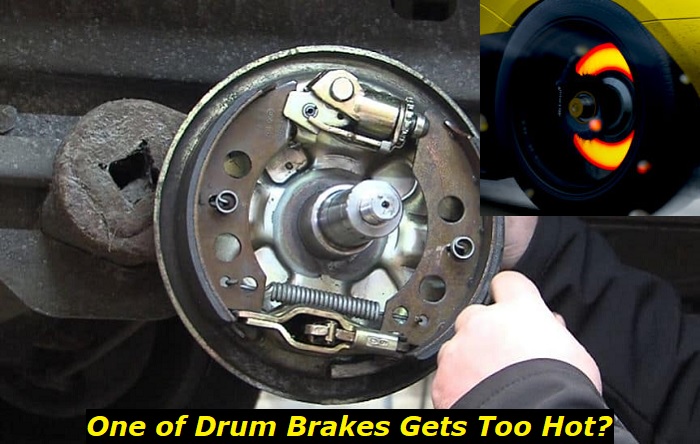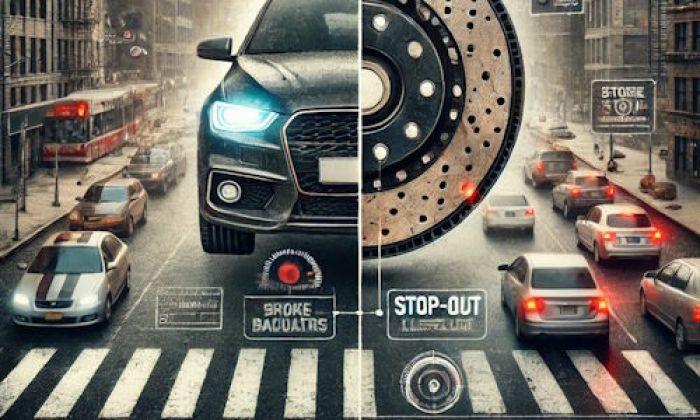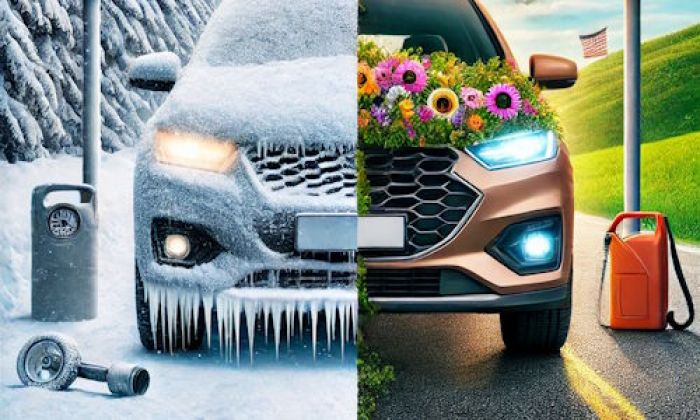Brakes are on the list of car components that must give 100%, 100% of the time. Diligent drivers are very wary of brake problems and always attend to them as soon as possible. Why delay a life or death matter a second longer than you must?
Brake pads problems highlights
- Level of urgency:super-urgent
- DIY diagnostics:possible but complicated
- DIY repairs:impossible
- Price for repair:$250 - $450
- Common symptoms:sounds when braking, unintentional braking, warped rotor
- Commonreasons:bad pads, improper installation, old pads
- If ignored:rotor wear, bad brakes, damage to the system

What to Do When Your Drum Brakes Heat Up on One Side
Drivers are advised to pull over their vehicle as soon as they detect the signs of overheating brake. While your car cools down, you will need to choose between having it towed to the dealership or a reputable auto repair shop or driving there. It is not advisable to drive your vehicle once you are aware of a drum brake defect.
If you have no option but to drive, ensure you maintain a low speed so you can stop regardless of your limited braking power.
Licensed mechanics at the dealership or auto repair shop will thoroughly inspect all your drum brakes, not just the overheating ones. Chances are that the brake you think is overheating may be functioning optimally, but its partner is not braking hard enough.
Accurate diagnosis is a crucial step in performing efficient and long-lasting repairs. Your mechanic will recommend that you fix both sets of drum brakes as custom dictates. Brake components are usually repaired and replaced in pairs to allow even wear and tear.
Understanding how the drum brake works will help you better grasp the problems that could be causing your drum brakes to get hot on one side.
How Drum Brakes Work
On an elementary level, both drum and disc brakes work similarly. Both rely on the principles of heat and friction to slow down and eventually stop your vehicle. The brakes slow down the turning wheels by applying resistance/friction, which in turn generates heat.
How quickly the brakes stop your car depends on various factors, including braking surface area, force, and weight of your vehicle. The better your brakes dissipate the heat generated by the stopping resistance, the more effective they are. Therefore, overheating brakes are struggling to perform their job and are likely to put you in harm's way. Disc brakes are designed to eliminate the heat generated much better than drum brakes.
Drum brakes get their name from the circular drum that houses all their components. Inside the drum are several components, including:
- Drum: a circular cast iron surface bolted to the wheel's hub. It works with the brake shoe to stop your vehicle
- Primary and secondary shoe generates the friction necessary to stop the car. Shoes are made of heat-resistant material and have linings on their outer curves that come into contact with the drum.
- Wheel cylinder: forces the shoe outward and into contact with the drum when your hit the brakes. It is connected to a piston that links to the master cylinder.
- Springs: Retract the primary and secondary shoes after you take your foot off the brake pedal.
- Self-adjuster: prevents the drum and shoe from getting into contact when the brake pedal is not pressed.
Your drum brakes can only operate if they absorb the heat generated when applying braking force. If your drum brake components overheat, they can no longer stop your vehicle.
Common Causes of Drum Brakes Getting Hot on One Side
Your drum brakes could be heating on one side for several reasons. Most of them include a defect in the brakes' internal components.
1. Heat Checking Drums
Heat checking is a mechanical term that refers to the appearance of numerous short hairline cracks on your drum braking surface. The fine cracks are caused by the repetitive heating and cooling of your brake system. Typically, heat checks disappear in time as you keep applying your brakes. In some instances, the heat checks progress and develop into deep cracks on your braking surface. If not noticed in time, these cracks could cause the entire drum to crack.
Solution:
While some heat checks are nothing to worry about, you should replace the drum should you discover cracks that are wider than 0.6 inches and deeper than 0.12 inches. If you need more clarification about the condition of heat checks on your drums, it is always advisable to have them inspected by a professional. You can find more information on replacing a cracked drum or one with deep heat checks below.
2. Cracked Brake Drum
If subjected to excessive cooling and heating during operation, your brake drum may crack under pressure. Inspect your brake drums for the presence of a crack that runs through the entire wall. This is most likely to happen to drivers who habitually speed up and slam on the brake pedal rather than pressing it gently. Your drum is also more likely to crack if your brake system balance is skewed.
Solution:
If you notice that the overheating brake drum is cracked, you should not drive your car further. Have your vehicle towed to the dealership or reliable auto repair shop where trustworthy professionals will install a high-quality OEM replacement. Experienced mechanics will also ensure your brake linings and system balance meets the conditions recommended by the manufacturer in your manual.
3. Excessive Wear and Tear
Drums often face excessive wear near the lining rivet holes and along the linings' edges when dirt and debris enter the braking system. Experienced drivers are always looking out for an accumulation of abrasive material. This abrasive material usually builds up and reduces your drum's life span by increasing wear and tear. Poor driving habits also contribute to excessive wear and tear.
Solution:
Drivers without dust shields are advised to purchase a set because they go a long way in preventing dust and debris from accumulating in your drum and ruining its surfaces. If you have a dust shield but still suffer from this problem, try removing the lower shield because it is likely preventing the dirt from leaving the braking system.
4. Blue Drums
If upon inspection, your drum's braking surface appears bluish in color, it has likely been subjected to frightfully high temperatures. These harsh temperatures may have been caused by defective function return springs, brake system imbalance, or continuous hard stops. Ignoring a bluing drum is a one-way ticket to a major mechanical malfunction.
Solution:
The blue color does not dictate a drum replacement. An experienced mechanic will inspect the drum and test whether it is still within the recommended operational tolerance. If your drum exceeds the tolerance limit, it must be replaced. Where the drum is not yet past salvaging, the mechanics shall diagnose the cause of the overheating by inspecting the following:
- Brake system balance
- Condition of your return springs
- Brake adjustment and clearance
5. Out of Round Drums
If your drum has different diameters at different points along its surface, then it is out of round. This condition could be caused by various elements, including:
- Excessive heat generation
- Improper chucking during dropping or turning
- Improper storage a
- Improper assembly technique
Solution:
Your mechanic may repair the drum if the diameter change is at most 0.12 inches. You will need to replace the drum if the damage is beyond 0.12 inches.
6. Polished Drums
Is your drum surface shiny enough to use when shaving? If so, you have also likely noticed some drag on your brakes. Dragging brakes wear down the braking surface leaving behind a polished appearance.
Solution:
Ensure our braking surface is sanded every time you get a relining of the shoes. You can get rid of the polished surface using 80-grit emery cloth to sand the surface.
Conclusion
When your drum brakes get hot on one side, your brake components may be defective. An improper brake system balance could also be behind your woes. Consult an experienced mechanic as soon as you notice a defect in your braking system.
About the authors
The CarAraC research team is composed of seasoned auto mechanics and automotive industry professionals, including individuals with advanced degrees and certifications in their field. Our team members boast prestigious credentials, reflecting their extensive knowledge and skills. These qualifications include: IMI: Institute of the Motor Industry, ASE-Certified Master Automobile Technicians; Coventry University, Graduate of MA in Automotive Journalism; Politecnico di Torino, Italy, MS Automotive Engineering; Ss. Cyril and Methodius University in Skopje, Mechanical University in Skopje; TOC Automotive College; DHA Suffa University, Department of Mechanical Engineering






Add comment